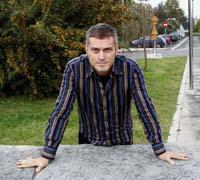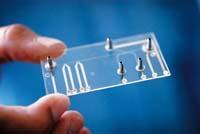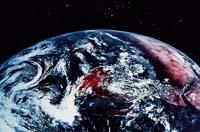Pedro Gómez Romero: "We want to make materials that help solve problems"

It is logical to ask this question. It seems that in recent years there has been an explosion in the world of materials and we are now surrounded by new materials. We have materials that previously seemed impossible and are used in multiple applications. Therefore, one might think that with them we have enough, but I am sure that in the future we will continue on that path, that is, new materials will be created. Why? Because technology needs materials to advance, with characteristics that do not have the current ones.
The new materials open up new possibilities, so we need them.
We work with different materials. We try to solve the problems and we have several investigations aimed at the application. However, we not only do applied science, but between basic science and applied science. That is, in most cases we will not create anything for a specific application, but we try to make materials that are oriented in one direction. We want to develop materials that help solve problems.
I think the biggest current problem is energy. We consume too much energy and exhaust the natural resources we use. The problem does not have a simple solution, of course, nor a single solution. But at least we should take better advantage of the energy we have, make energy transformation more efficient, and improve performance.
Likewise, the processes of obtaining a more useful energy from the energy sources of nature must be cleaner than at present, in order not to increase our impact on the environment.
To this contribute, for example, fuel cells. In the fuel cells, the chemical energy is transformed directly into electrical energy. In general, chemical energy is transformed into heat energy, and it is transformed into electric energy into turbine generators of thermal power plants, for example. So with the fuel cells we save a step.
In many cities already run buses with fuel cells and in our institute we try to make better fuel cells. In addition, we manufacture batteries for better energy storage and light emitting diodes. The diodes act against the photovoltaic cells, that is, they transform the electric energy into light and have a great application, among other things, in the domestic electronic devices.

Yes, I think we have to reflect in depth what we are doing, where the path we have taken and what we must do in the future takes us. Politicians have a lot of responsibility and we have to ask them to act with responsibility. For example, I was glad when Bush announced that he would use $1.2 billion to investigate fuel cells. Very good. But shortly afterwards, in the congress he asked permission to spend 75,000 million in the war in Iraq and gave him the approval. Since then, he has spent more money on Iraq. Of course, behind the war in Iraq there is oil, energy. Is that the solution?
We have to clarify the priorities and I have clear that the energy problem is a priority. In order for the consequences not to become even worse, we have to start working right now, otherwise I don't know what future our children will have.
Sometimes I compare the world with a living being. The technological world that we form men and women has a hypertrophied digestive system: it eats terribly. It needs a lot of food and, of course, makes a lot of cocoa. However, the organ of the senses is very small and quite atrophied.
At first glance it seems totally blind and deaf. But it's not so much, let's not get so tragic. Occasionally this organism detects something. For example, in the 1970s, two individuals, between two nearly 6,000 million, found that chlorofluorocarbons (CFCs) damage the ozone layer. Subsequently, in 1995, these individuals were awarded the Nobel Prize in Chemistry by that study. The most important thing is that at that time they realized the influence of CFCs and gave warning to the brain.
But… what kind of brain can such an organism have? Is it scary to think about it, no? However, he was able to react. He reflected on what was perceived by his senses and decided to stop using CFCs (Montreal Protocol, 1987). So he proved to be able to make an intelligent decision.
Well, perhaps not only the ozone layer was considered in the prohibition of CFCs. In fact, the business opportunity was opened to several American companies, which were enriched in the sale of HFCs. In any case, the organism reacted and, therefore, I have the hope of being able to react. The worst is time: the energy sources we use now don't have much to finish, and we need time to develop alternatives.

That is. Nanotechnology is a powerful tool for us, since at this scale the molecules have special characteristics, and we try to take advantage of it.
The physicist understands nanotechnology above all from greater to lesser, that is, it aims to make small the great tools to have more information in one place or greater capacity to carry out processes. For chemicals, nanotechnology is from less to more interest in the other direction. The objective is to obtain the necessary materials carrying on a large scale the properties of the molecules in the nanoscale.
Without a doubt. We do not know what will come out of an investigation or an investigation that apparently serves no purpose. For example, it occurred to us to make a mixed oxide of silver and copper. It does not exist in nature, and until then it was not created in any laboratory. So we got in full on it. In Germany, several members working in similar jobs were commented on, and they also began to do so.

The problem is that silver oxide is very unstable at high temperature, and as they had more money and resources than us, they used high pressures to not undo silver oxide. We did not have the opportunity and worked at room temperature. But, it seems, that was the way, because in the end we were successful. We were the first to synthesize silver and copper oxide.
It is very normal. It is simply a black powder. We publish the research in the most prestigious chemical magazine, patentamos the mineral and point.
However, the story did not end there, but the research that created a material that does not serve at all ends with surprise. In fact, they have seen in the German laboratory that it is an ideal catalyst for the partial oxidation of methanol. This process is very interesting for the manufacture of plastics. In addition, it allows the substitution of lithium batteries for better, more efficient, cheaper and cleaner batteries. And this is just an example. The history of science is filled with passages like this.

Yes. And it is that in our society engineers are better seen than scientists, but both are necessary. Engineers perform wonderful applications from existing materials. But where do these materials come from?
(Take in hand the mobile phone you have on the table, points to the screen). Look at this: an engineer has put the screen on the phone. This screen is made with a special material, is transparent and at the same time carries electricity. It is totally appropriate for this application, material made by a scientist. Surely someone would ask that scientist what to do this, if he did not have enough clear glass and metallic wires that drive electricity. But the scientist wanted to know how the material would be with these characteristics and worked to create that material, although it is not suspected what would be used later.
In this, the engineer and the scientist are very different. The engineer resembles the architect, the scientist to the farmer. The engineer builds it, following the plans, does it without errors and as planned. On the contrary, the farmer sows without knowing what will come out. Sometimes, bad weather will spoil the harvest, but other times, work will yield a fruit, and perhaps what you did not expect will come. Although agriculture is currently quite marginalized, we cannot forget that it is fundamental for humanity.

Buletina
Bidali zure helbide elektronikoa eta jaso asteroko buletina zure sarrera-ontzian











